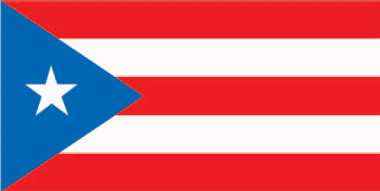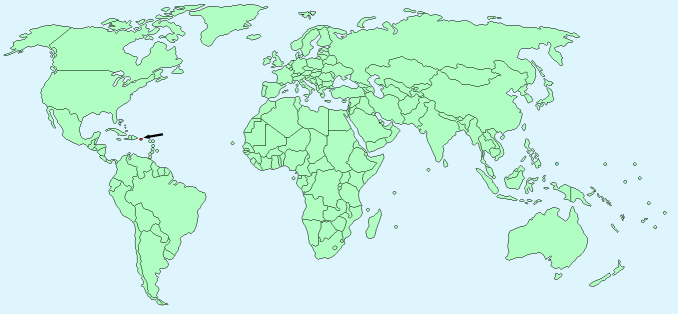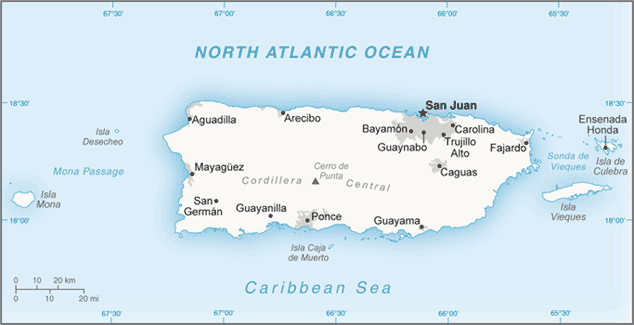Puerto Rico


Continent – North America
Region – Caribbean
Size – 13,791 km²
Geography – mountainous with northern coastal plain
Language – Spanish, English,
Religion – Roman Catholic 85%, Protestant 15%
Monetary Unit – United States Dollar
Natural Resources – copper, nickel
Agriculture – sugarcane, coffee, pineapples, plantains, bananas; livestock products, chickens
Industry – pharmaceuticals, electronics, apparel, food products, tourism

Neighbouring Countries – None
Population – 3,598,357 (2015 estimate)
Population Growth Rate -0.6%
Average Life Expectancy – 79.25
Capital City – San Juan (2,463,000)
Highest Mountain – Cerro de Punta (1,338m)
Longest River – Rio de la Plata (97 km)
Climate – tropical, hot, 21°C to 27°C
Yearly Rainfall – Northern coast – 16 cm (approx), Southern region 90cm (approx), mountains 300 cm (approx)
Plant Life – nutmeg, satinwood, Spanish elm, and Spanish cedar, butterfly tree, African tulip, flamboyán
Animal Life – no native animals but horses, cattle, cats, and dogs have been introduced, gecko, boa, iguana
Bird Life – thrushes, orioles, grosbeaks, hummingbirds, yellow-shouldered blackbird, parrots
Marine Life – tropical fish, crabs, and corals
Harvard Reference for this page:
Heather Y Wheeler. (2015). Puerto Rico. Available: https://www.naturalhistoryonthenet.com/Facts_Figures/Country_Facts/puerto_rico.htm. Last accessed Tuesday, July 19, 2016
Facts and Figures Pages
